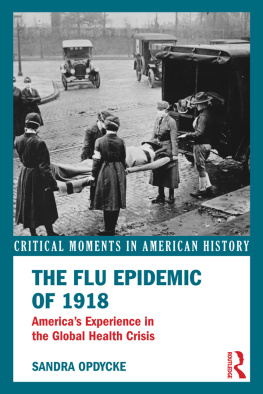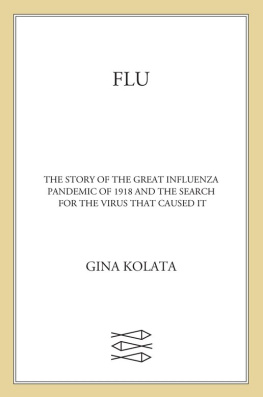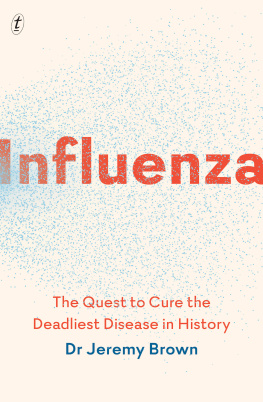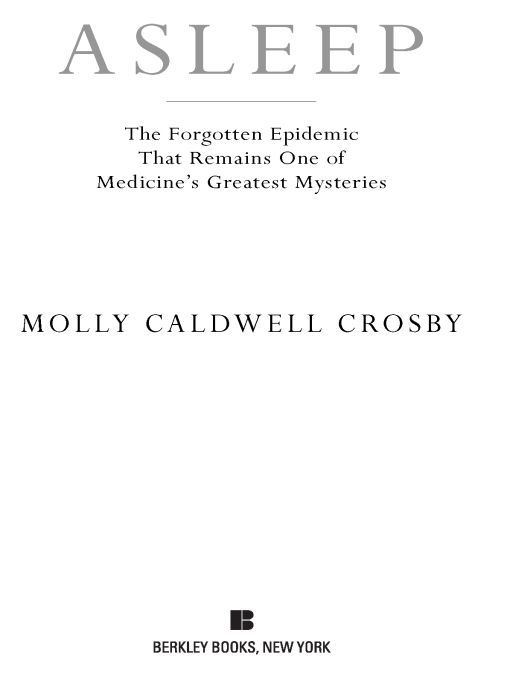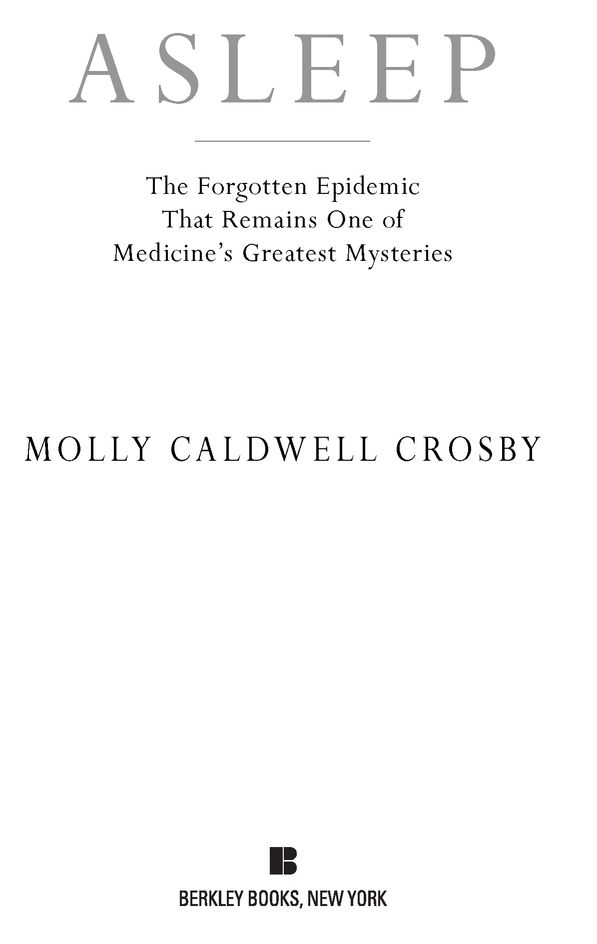Table of Contents
Most Berkley Books are available at special quantity discounts for bulk purchases for sales promotions, premiums, fund-raising, or educational use. Special books, or book excerpts, can also be created to fit specific needs.
For details, write: Special Markets, The Berkley Publishing Group, 375 Hudson Street, New York, New York 10014.
For Andrew, Morgen and Keller
AUTHORS NOTE
By the very nature of this disease and its range of symptoms, some of the stories presented in this book seem unbelievable, even impossible to imagine. Nonetheless, this is a work of nonfiction.
This disease is known as the forgotten epidemic and for good reason. At the time I was researching and writing, not a single contemporary book on the epidemic existed. Part of my research included an interview with neurologist and writer Oliver Sacks, whose powerful book Awakenings is the most famous story stemming from the epidemic, though the focus of his account is a group of patients, survivors of this forgotten epidemic, he encountered in the late 1960s. Sacks himself was surprised to find these victims of the disease languishing in mental institutions. He wrote, I would not have imagined it possible for such patients to exist; or, if they existed, to remain undescribed.
The bulk of my research for this book came from sifting through old medical journals and case studies from the 1920s, primarily those in the archives of the New York Academy of Medicine and Columbia Universitys Augustus C. Long Health Sciences Library. All the case studies in this book are based on actual medical records and articles published in medical journals from the time period, as well as personal accounts, family letters, and newspaper coverage.
In accordance with the Health Insurance Portability and Accountability Act (HIPAA), as well as respect for patient confidentiality, names and personal details that would point to patient identification have been changed. In cases that were covered in major newspapers and documentaries, names and personal details were not changed, as their cases were publicly documented and historically significant to this epidemic.
Each of the cases was chosen to represent the range of symptoms from this kaleidoscope of a diseasesome slept, some died, some recovered, some were crippledbut it is the collection of their cases that is the story. It was an epidemic that was shocking not because of the number of victims or medical breakthroughs or famous physicians, but because it so horribly and hauntingly altered the lives of its patients and the doctors who tried to save them.
This disease may have existed for hundreds of years, epidemics of it weaving in and out of the seam of history, but one amazing fact seems to hold true: physicians are surprised and confounded by it each time it appears, from the 1920s epidemic to Oliver Sackss research in the 1960s to the cases discovered today. It begs the question: should this disease return in epidemic form, will we be just as bewildered and unprepared as those who came before us?
Though cases have become rarer within the last few years it is unlikely that it will ever again vanish from medical memory.
DR. CONSTANTIN VON ECONOMO, 1931
Such forgettings are as dangerous as they are mysterious.
DR. OLIVER SACKS, 1973
PROLOGUE
Inside
My grandmother was sixteen when she fell asleep. What she remembered most from those weeks was the whiteness and the emptiness. Not whiteness like snow or fresh paint, but one caused by the complete lack of anything else, the same way a dense fog can consume everything in its path. She also felt cool, like the summer nights when she slept with a bowl of ice in front of the fan. Everything seemed cold and vacant and white.
She could see herself present in the room, but she was not herself. She was polished somehow. Smooth and sculpted like a statue. She tried to lift her arm, but it would not move. She concentrated and tried again, but she felt as though her arms, hands, legs, and feet were no longer connected to her brain, no longer accepting commands. At that point, she became frightened. An overwhelming, claustrophobic fear seized her: she was a statue.
As though her mind could only take so much of this stress, she began to pull away, teetering on the edge between a dream and wakefulness. Finally, her mind told her that she was only dreaming, it was only a nightmare, and she felt the relief rush through her like a winter breath. She began to feel her bedsheets on her skin and sensed the sallow light from her eastward window. She struggled to come out of the dream and open her eyes, but it would not happen. The feeling that something terrible was happening, a taste of the nightmare, remained.
There were things she knew even through her closed eyes: in the morning, the drapes opened and the lamps were extinguished, the smell of gas still streaming from the wick. When the drapes closed again in the afternoon heat, it was like a heavy cloud passing in front of the sun. She could smell the purple, bearded iris that her mother kept in a vase on the piano. And she remembered how she ended up in bed, when drowsy, feverish, and weak, she had fallen down the stairs of her parents home.
There were things she could not know with her eyes closed: the passing of time. Time, after all, is a fixed point in life we take for granted. To lose it is like losing balance. She could not feel herself, or at least how to control herself. Her body no longer answered to her mind. She was imprisoned by bars of bone in a windowless cell. And she did not know the strange voices that came and went from her room, mingling with the sound of her parents voices. She heard them discuss how many weeks of school she had missed; she heard them say sleeping sickness.
The year was 1929, and at the time, Virginia and her family had no way of knowing she was joining millions of others suffering from a strange, global pandemica disease that would change medicine itself, but vanish from medical history. A disease that would kill close to a million people and leave thousands more languishing in mental institutions for the rest of their lives. An epidemic that nearly a century later remains a mystery, but could strike again.

Virginias mother spoke to her in that calm tone of voice used for bloodied shins or turned ankles, and her room was filled with the muffled voices of doctors. What was most frightening was the uncertainty in their voices. They did not know what had caused this in a healthy teenage girl, and worse, they did not know how to stop this endless sleep. Her temperature was taken several times and noted on her chart. She felt the doctors hand against her wrist and on the stem of artery along her neck. And then, over the course of the days and weeks, she heard the doctors pronounce her deadthree different times. Each time, she listened to her parents weep and heard them make plans for her viewing and burial.
She could not even tell them they were wrong.
CASE HISTORY ONE
Austria, 191617
NAME:


